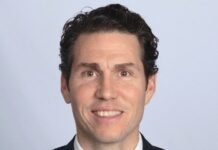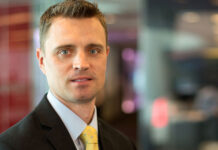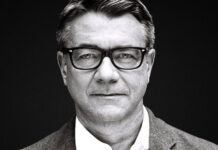Vincenzo Vedda, global head of trading at DWS (formerly Deutsche Asset Management) has laid out his vision for the firm’s new trading operations for the first time. DWS, which has €676 billion in assets under management, separated from Deutsche Bank in Q1 2018 when it was listed on the Frankfurt stock exchange, with an initial public offering of 25% ownership, the rest being retained by the bank.
The Frankfurt-headquartered asset management firm now operates a global hub model with three key hubs in New York, Hong Kong, and Frankfurt, following the closure of the London desk, and the departure of Juan Landazabal, formerly the global head of fixed income and FX trading, and Cathy Gibson, formerly head of fixed income trading, who has taken up the reins as head of trading at Royal London Asset Management. Vedda says that the decision to shut the London trading operation was in order to simplify the structure, rather than a consequence of Brexit.
“The key book was always in Frankfurt and most importantly most of our portfolio managers also sit in Frankfurt,” he says. “I think the vicinity of portfolio management, with trading integrated into the investment process, is key. There were increased operational challenges and looking at the risk portfolio it was an organisational decision to centralise across those three hubs.”
The business is retaining trading specialisms for asset classes, but Vedda asserts the business is seeking to improve information flow between trading desks and the use of that information.
“For example how we use lending information in trading bonds for equities, how high yield information can help an equity trader, and so on,” he says. “Those lines need to work better together.”
The trading team is also engaging members who have diverse backgrounds, such as the new European head of fixed income and FX trading, who has a securities finance background, and team members with multi-asset experience into equities roles
“If you consider our new European head of fixed income trading, his experience allows him a different perspective on investment grade (IG) credit, for example,” Vedda explains. “One bond might look cheap on the curve and it’s less expensive. But many people would not realise that one bond might pay you 4% if you lend it out, and the other 35 basis points. So the total return for one is lower even though it looks cheaper than the other.”
The team has also beefed up its skill sets with the hire of a quantitative specialist from the investment bank, who will work on pricing modules. It is developing the data sets available, drawing on partnership with order management system (OMS) provider Aladdin and Bloomberg for its transaction cost analysis (TCA) tool for fixed income to add some benchmarking. However, he is conscious that providing best execution goes beyond simple reflections of price, and acknowledges that TCA will only be a part of the process for supporting fixed income best exection.
“A trader will understand what they are doing, and they can explain very well why they are doing it. But how do they evidence that?” he says. “That’s an issue for a lot of people at the moment. It is going to be difficult in the fixed income world.”
DWS will also be looking at increased automation of low touch trades so that traders can bring their skills towards more challenging trading situations where there is very little price discovery, or illiquid securities that are difficult to trade, and away from process-led tasks.
“Automation will give us scale,” says Vedda. “For example, if you trade €500,000 in a 10-year benchmark government bond, there is no added value in the trader manually asking the brokers for quotes or manually sending that to an RFQ platform. We are going to automate heavily, then really invest in tools that help us to be price makers.”
Nevertheless he says, it will not separate trading across a high touch desk and a low touch desk.
“I don’t believe in building a large low-touch team when a lot of this activity can be automated,” he says.
©TheDESK 2017























